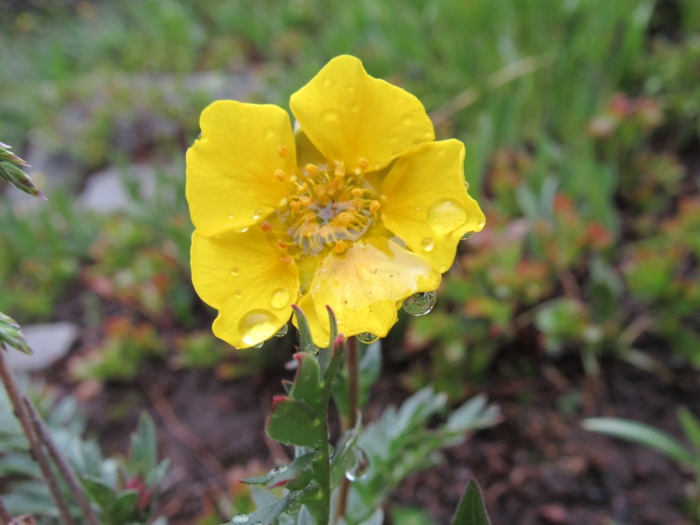Ross’ Avens
(Geum rossii)
Ross’ Avens (Geum rossii)
/
/

Anders Hastings
CC BY 4.0
Image By:
Anders Hastings
Recorded By:
Copyright:
CC BY 4.0
Copyright Notice:
Photo by: Anders Hastings | License Type: CC BY 4.0 | License URL: http://creativecommons.org/licenses/by/4.0/ | Rights Holder: Anders Hastings | Publisher: iNaturalist | Date Created: 2022-06-19T10:05:07-07:00 |
























Estimated Native Range
Summary
Geum rossii, commonly known as Ross’ avens or alpine avens, is a perennial herb that thrives in the alpine tundra and rocky slopes of northern Canada and the high mountains of the western United States, including the Rocky Mountains, as well as the Arctic and Russia. It is adapted to cold, harsh environments and is often found in alpine meadows and gravelly soil areas. This plant typically grows to a modest height of 4-12 inches (10-30 cm) with a similar spread, forming a low, clumping mound.
Ross’ avens features pinnate, fernlike leaves that form a basal rosette. From late spring to early summer, it produces cup-shaped, bright yellow flowers on slender, erect stems, which are moderately showy and attract pollinators. The flowers give way to feathery seed heads that add textural interest in the landscape. In cultivation, it is valued for its hardiness and ability to thrive in challenging mountain garden conditions. It is used in rock gardens, alpine gardens, and as a ground cover. Ross’ avens prefers well-drained, gritty soil and full sun to partial shade. It requires minimal water once established, making it suitable for xeriscaping. While generally low-maintenance, it can be susceptible to root rot in poorly drained soils and may be affected by leaf spot diseases.CC BY-SA 4.0
Ross’ avens features pinnate, fernlike leaves that form a basal rosette. From late spring to early summer, it produces cup-shaped, bright yellow flowers on slender, erect stems, which are moderately showy and attract pollinators. The flowers give way to feathery seed heads that add textural interest in the landscape. In cultivation, it is valued for its hardiness and ability to thrive in challenging mountain garden conditions. It is used in rock gardens, alpine gardens, and as a ground cover. Ross’ avens prefers well-drained, gritty soil and full sun to partial shade. It requires minimal water once established, making it suitable for xeriscaping. While generally low-maintenance, it can be susceptible to root rot in poorly drained soils and may be affected by leaf spot diseases.CC BY-SA 4.0
Plant Description
- Plant Type:
- Height: 0.3-1 feet
- Width: 0.3-1 feet
- Growth Rate: Moderate
- Flower Color: Yellow
- Flowering Season: Summer
- Leaf Retention: Deciduous
Growth Requirements
- Sun: Full Sun, Part Shade
- Water: Medium
- Drainage: Fast, Medium
Common Uses
Bee Garden, Low Maintenance, Rock Garden
Natural Habitat
Alpine tundra and rocky slopes
Other Names
Common Names: Ross’s Avens , Alpine Avens
Scientific Names: Geum rossii , Acomastylis humilis , Acomastylis nivalis , Acomastylis rossii , Acomastylis rossii var. rossii , Acomastylis sericea , Geum filipes , Geum humile , Geum rossii var. humile , Geum rossii var. humilis
GBIF Accepted Name: